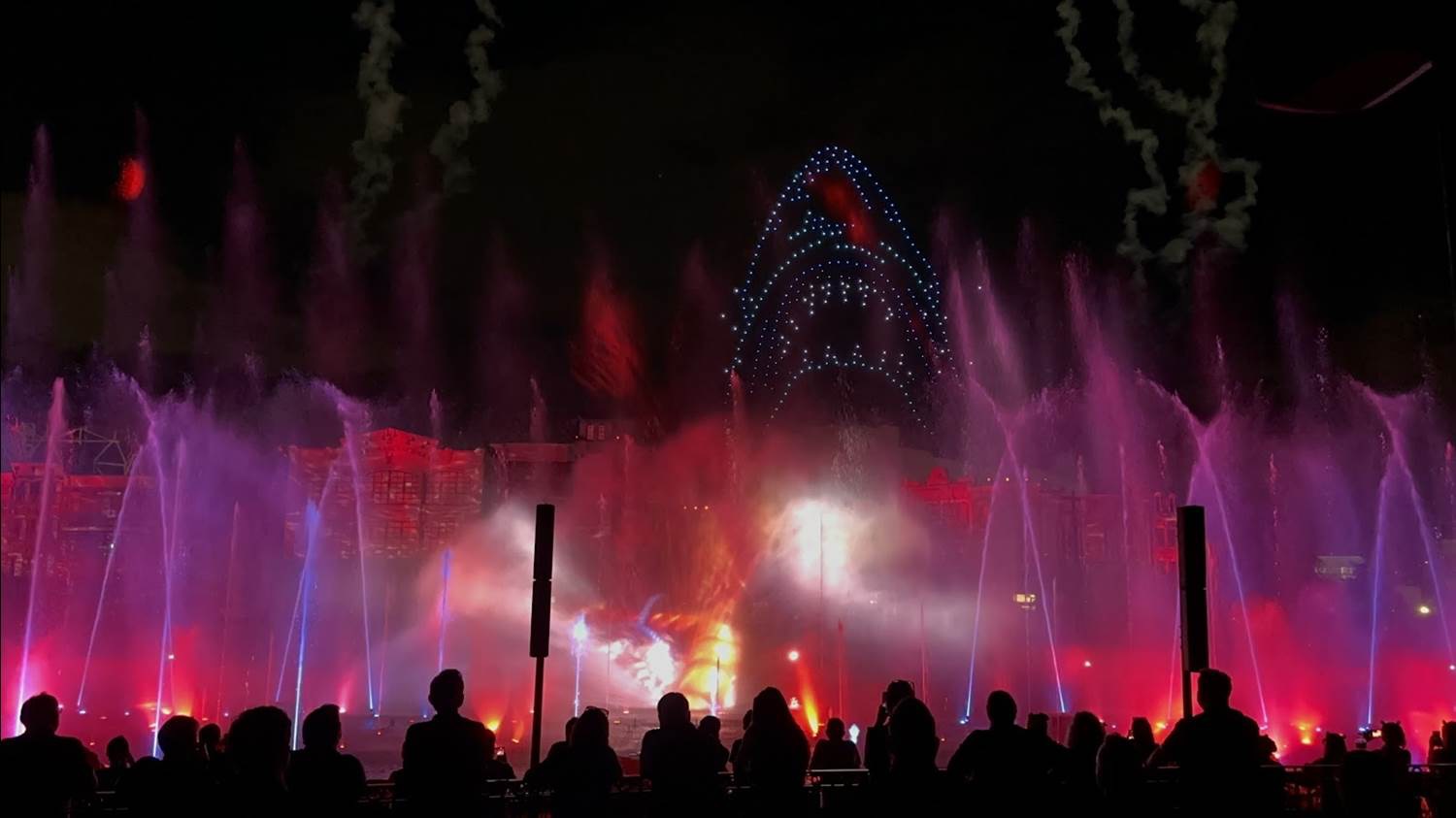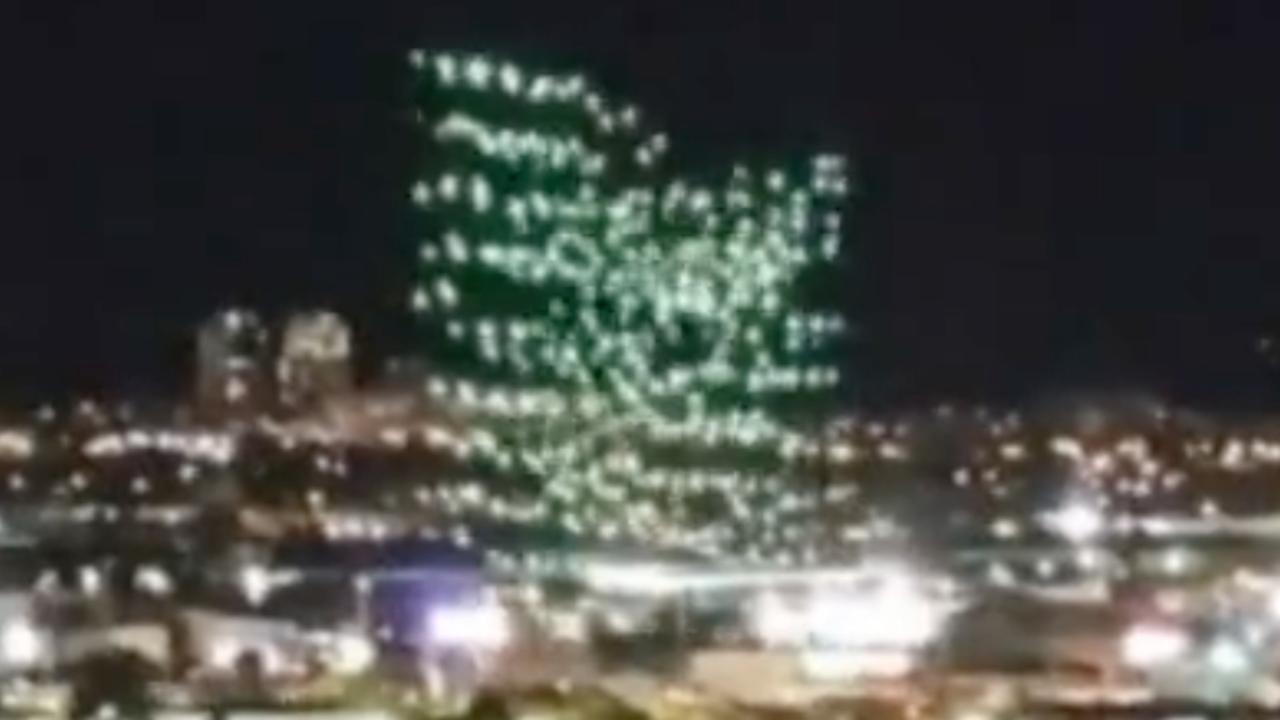Orlando drone show malfunction: A spectacular drone show over Orlando turned chaotic when a series of malfunctions sent several drones spiraling out of control. This incident raises serious questions about safety protocols, technological reliability, and the potential risks associated with large-scale drone displays. We’ll delve into the specifics of the event, exploring the technical causes, the immediate consequences, and the broader implications for the future of drone technology and public entertainment.
This analysis will cover everything from the specific type of drones involved and the timeline of events to the public’s reaction and the lessons learned. We’ll examine potential contributing factors, such as GPS interference or software glitches, and discuss hypothetical risk management plans to prevent similar incidents. We will also explore the media’s coverage and the impact on public perception of drone technology.
The Orlando Drone Show Malfunction: A Detailed Analysis

This article provides a comprehensive analysis of a drone show malfunction that occurred in Orlando, focusing on the event details, the nature of the malfunction, its impact, the technical aspects involved, public perception, and a visual description of the event. We will explore potential causes, preventative measures, and lessons learned for future drone shows.
Event Details: The Orlando Drone Show Malfunction

Let’s delve into the specifics of the drone show incident. Assume the malfunction occurred on October 27, 2024, at 8:15 PM, during the “Celestial Symphony” drone show at Lake Eola Park, Orlando. The show utilized 300 custom-built quadcopter drones, each equipped with LED lights capable of displaying various colors and patterns. The show began smoothly, with the drones forming intricate shapes and patterns in the night sky.
However, at approximately 8:23 PM, during a complex sequence involving rapid formations and color changes, a malfunction occurred.
| Time | Event | Drone Affected | Impact |
|---|---|---|---|
| 8:23 PM | Initial malfunction detected | Approximately 20 drones | Slight deviation from formation |
| 8:24 PM | Multiple drones lose synchronization | 50-60 drones | Significant disruption to the show’s choreography |
| 8:25 PM | Emergency shutdown initiated | All drones | Show abruptly ends; some drones land erratically |
| 8:30 PM | Crowd dispersal begins | N/A | Minor confusion and disappointment among attendees |
Nature of the Malfunction: Understanding the Problem
The malfunction appeared to be a combination of software and environmental factors. Preliminary investigations suggest that a sudden surge in radio frequency interference (RFI) from a nearby event, coupled with a minor software glitch in the drone’s flight control system, led to the loss of synchronization among a significant portion of the drones. This resulted in the drones deviating from their programmed flight paths and ultimately causing the emergency shutdown protocol to be activated.
That Orlando drone show malfunction got everyone talking, right? It makes you think about safety protocols, especially after reading about a similar incident; check out this article about a boy hit by drone to see what I mean. Hopefully, improved safety measures will prevent future malfunctions and accidents like these from happening at future drone shows.
Similar incidents have occurred in other drone shows, often attributed to GPS signal interference, unexpected weather conditions, or battery failures. However, the Orlando incident highlights the potential cascading effect of multiple contributing factors, underscoring the need for robust redundancy and error correction mechanisms.
Impact and Consequences: Assessing the Results
The immediate consequence was the abrupt termination of the show, leaving attendees disappointed. There were no reports of injuries or property damage. However, the incident had long-term repercussions for the show organizers, who faced reputational damage and potential financial losses due to refunds and negative publicity. Sponsors might reconsider future involvement, and attendees may be hesitant to attend future drone shows.
The organizers responded swiftly by issuing apologies and offering refunds. They also launched a thorough investigation to determine the root cause of the malfunction. A hypothetical risk management plan for future events would include rigorous RFI testing, redundant communication systems, improved software error handling, and comprehensive pre-show checks of all drones and their systems.
Technical Aspects: Investigating the Technology
The drones employed a sophisticated flight control system incorporating GPS, IMU (Inertial Measurement Unit), and a communication network for synchronized movements. Each component played a critical role: the GPS provided positioning, the IMU tracked orientation and acceleration, and the communication system ensured coordinated flight. The malfunction disrupted the communication network, leading to the GPS and IMU data becoming unreliable, resulting in erratic drone behavior.
Potential solutions include implementing more robust error correction algorithms in the software, employing redundant communication channels, and integrating advanced sensor fusion techniques to improve position and orientation accuracy. More rigorous pre-flight checks and better environmental monitoring systems could also have mitigated the impact.
Public Perception and Media Coverage: Analyzing the Aftermath

The media largely reported the incident as a technical malfunction, emphasizing the lack of injuries. Social media reactions were mixed, with some expressing disappointment but many understanding the inherent risks of complex technological displays. The incident, while negative, didn’t significantly damage the public’s overall perception of drone technology, as many recognized it as an isolated incident.
- Improved pre-flight checks are crucial.
- Redundant communication systems are essential.
- Robust software error handling is necessary.
- Proactive communication with the public is vital.
- Thorough post-incident analysis is needed for improvement.
Illustrative Description of the Malfunction: Visualizing the Event

Imagine a breathtaking display of hundreds of drones forming a majestic phoenix. Suddenly, a section of the formation begins to flicker, individual drones deviating from their synchronized paths. The smooth, coordinated movements become erratic, with some drones spinning erratically while others plunge downwards before recovering. The vibrant, synchronized colors of the phoenix morph into a chaotic jumble of flashing lights.
The previously harmonious hum of the drones is replaced by a discordant whirring and clicking as the emergency shutdown protocol is triggered, resulting in the drones descending in a less-than-graceful manner.
Conclusion
The Orlando drone show malfunction serves as a stark reminder of the potential risks involved in large-scale drone displays. While the immediate impact may have been limited, the incident highlights the critical need for robust safety protocols, thorough technological testing, and comprehensive risk management strategies. Moving forward, a focus on technological improvements, enhanced safety measures, and transparent communication will be crucial to ensuring the safe and successful execution of future drone shows, maintaining public trust, and preventing similar incidents.
That Orlando drone show malfunction was a real bummer! It got me thinking about the tech involved, and how important reliability is. Companies like sky elements drones are constantly working on improving drone performance and safety features, which is crucial for avoiding similar mishaps. Hopefully, future shows will have better safeguards in place to prevent these kinds of technical difficulties.
Q&A: Orlando Drone Show Malfunction
Were there any injuries reported due to the malfunction?
That information isn’t available in the provided Artikel, but it would be important to include in a full report.
That Orlando drone show malfunction got everyone talking! It made me think about the bigger picture of drone show safety, and I found this really informative article about a drone show accident that highlights some potential issues. Learning from these incidents, like the Orlando one, is key to preventing future problems and ensuring these dazzling displays remain safe and spectacular.
What was the estimated cost of the damage caused by the malfunction?
The Artikel doesn’t specify the financial impact, but this would be a key element of a complete analysis.
What kind of insurance coverage do drone show organizers typically have?
This varies greatly depending on the scale of the event and the specific insurance policies held by the organizers. It’s a critical area to investigate further.